Mentzelia albicaulis, Whitestem Blazingstar
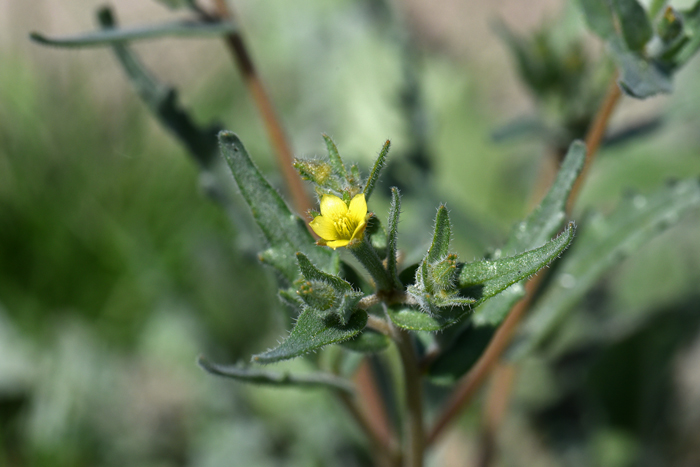
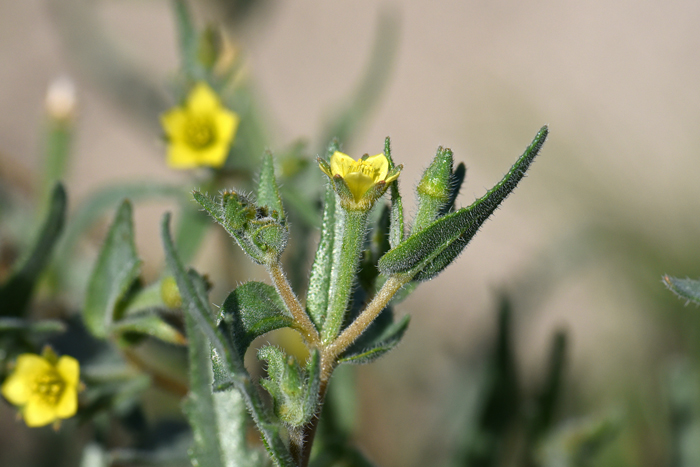
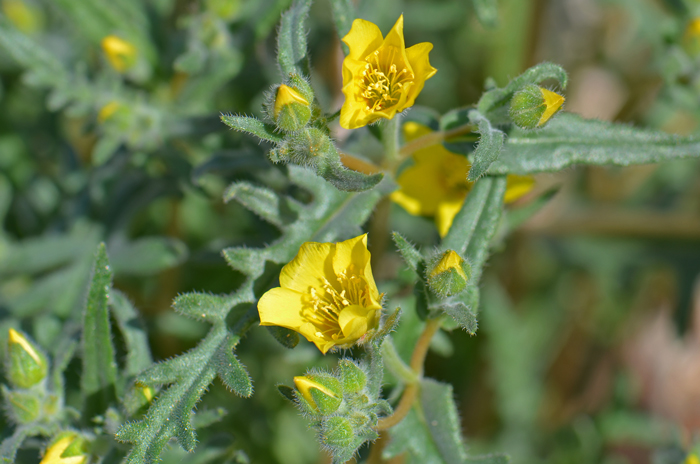
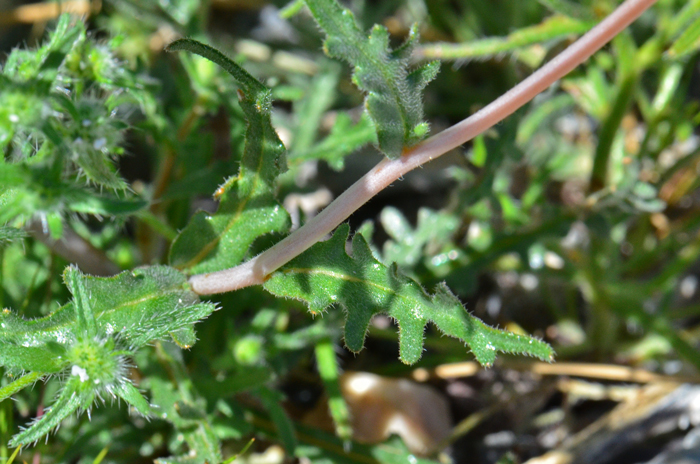
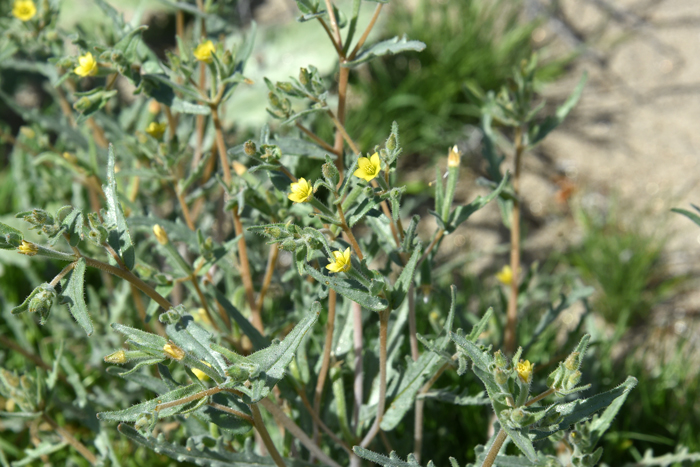
Scientific Name: Mentzelia albicaulis
Common Name: Whitestem Blazingstar
Also Called: Small-flowered Blazing Star, White Blazingstar, Whitestem Stickleaf (Spanish: Rama Pegajosa, Buena Mujer)
Family: Loasaceae or Blazingstar Family
Synonyms: (Acrolasia albicaulis, Acrolasia gracili, Mentzelia aspera, Mentzelia albicaulis var. ctenophora, Mentzelia albicaulis var. gracilis, Mentzelia albicaulis var. tenerrima, Mentzelia gracili, Mentzelia mojavensis, Trachyphytum gracile)
Status: Native
Duration: Annual
Size: Up to 16 inches or so.
Growth Form: Forb/herb; stems slender, glabrous or with short hairs, plants erect bur mostly decumbent.
Leaves: Green; leaves sessile, narrowly elliptic to lanceolate, basal leaves lobed, cauline leaves mostly lobed.
Flower Color: Yellow; flowers small but showy, shiny surface; cymose inflorescence flowers sessile; bracts lanceolate to ovate; 5 petals, 5 sepals; flowers in clusters (1 to 3), tubular when fully open; flowers with 15 to 30 stamens each with linear filament; fruit capsules club shaped.
Flowering Season: February to June; March to July in California; March to June in Texas.
Elevation: 1,000 to 7,400 feet.
Habitat Preferences: Sandy soils on plains and along washes; California gravel fans, sand dunes, washes, creosote-bush scrub, pinyon/juniper woodland; New Mexico in dry meadows and hillsides at lower to middle elevation.
Recorded Range: Whitestem Blazingstar is found in the western half of North America. In the United States it is found in; AZ, CA, CO, ID, MT, NE, NM, NV, OR, SD, TX, UT, WA and WY. In Canada it is found in BC and SK. It is also native to Baja California and Mexico. In Arizona it is found throughout most of the state, few records in Yuma County.
North America & US County Distribution Map for Mentzelia albicaulis.
U.S. Weed Information: No information available.
Invasive/Noxious Weed Information: No information available.
Wetland Indicator: No information available.
Threatened/Endangered Information: No information available.
Genus Information: In North America there are 73 species and 73 accepted taxa overall for Mentzelia. Worldwide, The Plant List includes 88 accepted species names and a further 52 of infraspecific rank for the genus.
In the southwestern United States: Arizona has 28 species of genus Mentzelia, California has 29 species, Nevada has 26 species, New Mexico has 20 species, Texas has 17 species, Utah has 21 species. All data is approximate and subject to taxonomic changes.
Comments: Whitestem Blazingstar inter-grades with 3 other species in Mentzelia. Additionally there are many species in Mentzelia in North America and they may be difficult to identify.
Also see in Southwest Desert Flora, Adonis Blazingstar, Mentzelia multiflora and Veatch's Blazingstar, Mentzelia veatchiana.
Mentzelia albicaulis has been used for a variety of purposes by southwestern United States indigenous peoples.
See all ethno-botanical uses identified at Native American Ethnobotany, University of Michigan, Dearborn.

